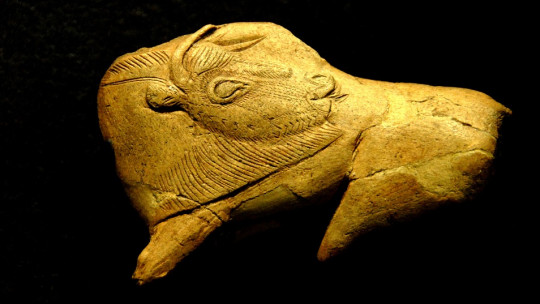
Religion is a topic of conversation capable of generating the most fiery discussions but we often forget that there is no one way to believe that one or more gods exist.
Like practically all psychological characteristics related to belief systems, there is a spectrum of intensity that ranges from obsession with the idea of the divine to the total absence of belief, passing through various states of uncertainty.
It is this idea that gods are believed to follow a continuum that led biologist Richard Dawkins to create a scale, something that is known as the theistic probability spectrum. Let’s see what this concept proposed in his book consists of. The God Delusion and how it helps us position ourselves before religion and belief in a god (or more than one).
What is the theistic probability spectrum?
The fundamental idea that gives rise to the creation of the theistic probability spectrum, also known simply as “the Dawkins scale”, is that we can use extreme values in the intensity with which it is possible to believe in one or more gods to, using those extremes as a reference and creating intervals between them, place ourselves on that scale that goes from the total certainty that the divine exists to the total certainty that it does not exist nothing that can be classified as such.
Thus, the Dawkins scale goes beyond the dichotomous idea that one can be a believer or a non-believer, and establishes several intermediate categories. In the same way, its design makes it less likely to define oneself as pure agnostic since there are more options to choose from and consequently the possibilities of not choosing either theism or atheism at all are reduced.
Degrees of belief in God according to the Dawkins scale
Next we will see what the categories that Richard Dawkins proposed to establish this scale between theism and atheism are like. It must be taken into account that although it works for any theistic religion, it was designed specifically with Christianity and Abrahamic religions in general and their concept of God in mind.
1. Strong theist
This end of Dawkins’ scale expresses the absolute certainty that God exists. It is still a belief, but it is a belief for which there are practically no doubts or moments of hesitation.
2. De facto theist
In this second degree of theism, less extreme than the previous one, there are certain doubts about the existence of God, but they are sufficiently insignificant that In practice the person defines himself as a theist without any problem and usually acts as if the deity exists.
3. Agnostic close to theism
This is a form of weak agnosticism in which there are serious doubts that God exists, but a deity is considered more likely to exist than the opposite.
4. Completely unbiased agnostic
It represents a category completely equidistant with respect to the extremes represented by theism and atheism. It is believed that There is the same chance that God exists or that he does not exist.
5. Agnostic close to atheism
Following the symmetrical structure of the theistic probability spectrum, it can already be intuited that this category corresponds to those who believe that There is a greater chance that God does not exist than that he exists but these are not far from the 50% represented by the completely impartial agnostic.
6. De facto atheist
There are some doubts about the non-existence of God, but in general one lives as if the divine only existed as a historical and anthropological phenomenon and not beyond nature.
7. Strong atheist
This is the second category located at one end of the theistic probability spectrum, and represents the total absence of belief in God, or in other words, the certainty that God does not exist.
The characteristics of this gradation
It must be taken into account that the Dawkins scale It is not a tool to measure the intensity with which a person adheres to the norms established by a religion or by ideologies contrary to any religion. In any case, it serves to measure the intensity with which one believes in the existence of one or more gods from a theoretical point of view, without any further implications than that.
So that, cannot be used to establish whether a person is more or less fundamentalist if you want to impose your religious or anti-religious dogmas on others, etc.
On the other hand, if we judge the theistic probability spectrum as a tool available for use in psychology, it is easy to find many problems with it.
First of all, they are Typical limitations of instruments based on introspection and self-assessment. For example, saying that you are totally agnostic is not the same as behaving like a totally agnostic person. Between the ideas associated with self-concept and real behavior in specific contexts there is a distance to consider.
Second, the Dawkins scale It is based on such abstract concepts that it is very difficult to understand exactly what each person is thinking about when he answers what he answers.
For example, some may try to place themselves on this scale having in mind a very traditional and humanized version of the Christian god, others may do so assuming that the Christian god is something much more abstract and distant from human understanding, and others may do so assuming that ” God” simply means a form of intelligence capable of designing nature and indifferent to notions of good and evil.
All things being equal, Depending on what you think the concept “God” represents, it will be easier to answer one thing or another since some versions of the deity have more associated characteristics and others have fewer (making it less possible to be wrong if one claims that he exists).
Thus, the theistic probability spectrum serves more as a tool for reflection, and not so much as a resource for obtaining meaningful statistics.








